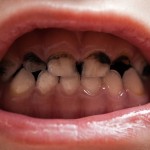
Early diagnosis and effective treatment of dementia will help large numbers of the population remain independent for longer. Cholinesterase inhibitors are one of the anti-dementia drugs that are used to treat Alzheimer’s disease, and they are often used immediately after diagnosis. This new systematic review from the Cochrane Dementia and Cognitive Improvement Group, looks at [read the full story…]








